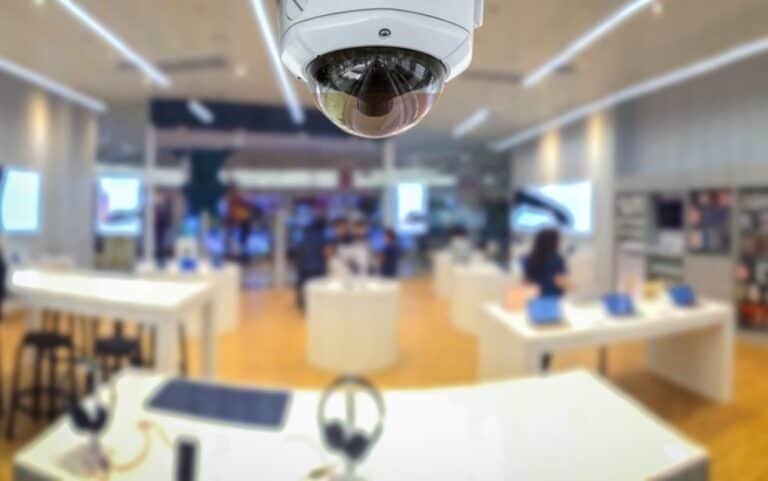Stores are deploying AI-powered cameras in multifaceted ways. Everything from theft prevention to supply chain management comes into play. For such applications to succeed, customer trust is essential.
Dutch supermarket chain Jumbo announced this week that it wants to improve theft prevention using AI. Among other measures to discourage potential thieves, it is conducting tests with AI software to detect anomalous behaviour. The trial will last three months, after which a nationwide deployment may occur. It should be a weapon in the fight against shoplifting, which Jumbo says has resulted in losses of more than 100 million euros.
All this raises many questions about effectiveness and safeguarding privacy. The Dutch privacy watchdog AP warned Jumbo back in 2020 over the use of cameras with facial recognition. The supermarket chain now says the new “smart cameras” are not intended to trace back to specific individuals. Either way, all users could potentially benefit from better monitoring, according to Jumbo, as the millions lost to theft might otherwise be put into price reductions. We’ll wait and see if that’s the case.
Not yet successful
Other implementations of AI-powered cameras in retail offer some more concrete benefits for consumers. For example, many a tech conference hall has been filled with a demonstration of real-time inventory control of store shelves the past year. AI systems can now recognize fairly unambiguously when a shelf is starting to get empty so that store employees can proactively replenish it. The next thought may be: which products are people actually buying and why? This goes beyond simply digitally scanning the store inventory for whatever sells well, as retailers can now find out if a customer even sees a product in the first place. Perhaps the product is in an inconvenient location? AI can give answers to such questions. All this can already be investigated with conventional research methods, but AI analysis makes such insights a lot more accessible – and speedier – than before.
This brings us to an essential aspect of AI in retail: ideally, it should be virtually invisible. The self-scanning checkout has become a common occurrence by now. Amazon went one step further when it unveiled the “Just Walk Out” concept, which is used at Amazon Go stores in the US and UK. Consumers need only enter the store using the Amazon app, by swiping a pass or passing a palm scan. They can then walk out after shopping, as the name of the concept suggests. Payment is automatic, as is theft detection.
Unfortunately, the concept does not yet appear to be too successful. High costs and a lack of persuasive power over potential customers seem to limit the implementation of Just Walk Out. The number of stores that actually deploy it hasn’t exceeded 100 worldwide.
Optimizing Routes
Should ‘Just Walk Out’ not get an AI-assisted resurgence, there is still plenty to gain when it comes to customer experiences. For example, Japan’s Retail AI offers solutions to optimize even more aspects of chain stores using cameras.
Retail AI can measure consumer behaviour in great detail. Its software can show where customers are staying for a longer time and what their general movement looks like. Such considerations have been studied for years, but previously, only general conclusions could be drawn from them. Now, retail chains can experience in real-time whether any changes trigger a positive response. Crucially, it can become apparent rather quickly what the next improvement step should be. Although the company also states that shoplifting can be prevented, that is not the focus of Retail AI’s messaging.
Beyond the store itself
Just as important as the store itself is the logistics infrastructure behind it. On that front, the use of AI when combined with visual information is also promising. In addition to software from Manhattan Associates, for example, which aims to optimize the supply chain, there are still opportunities to take advantage of camera images. AI analysis can determine where certain goods can be optimally placed and how employees collectively maximize efficiency. This can lead in real time to a movement of manpower so that all tasks can be finished on time, but can also lead to such conclusions as one which states that a specific region is more keen on a certain product than others are, which can lead to a change in the supply to a . This is basically possible without installing cameras for that, but visual input shows human behaviour most clearly.
Also read: AI and supply chain optimization are the biggest opportunities for retailers
